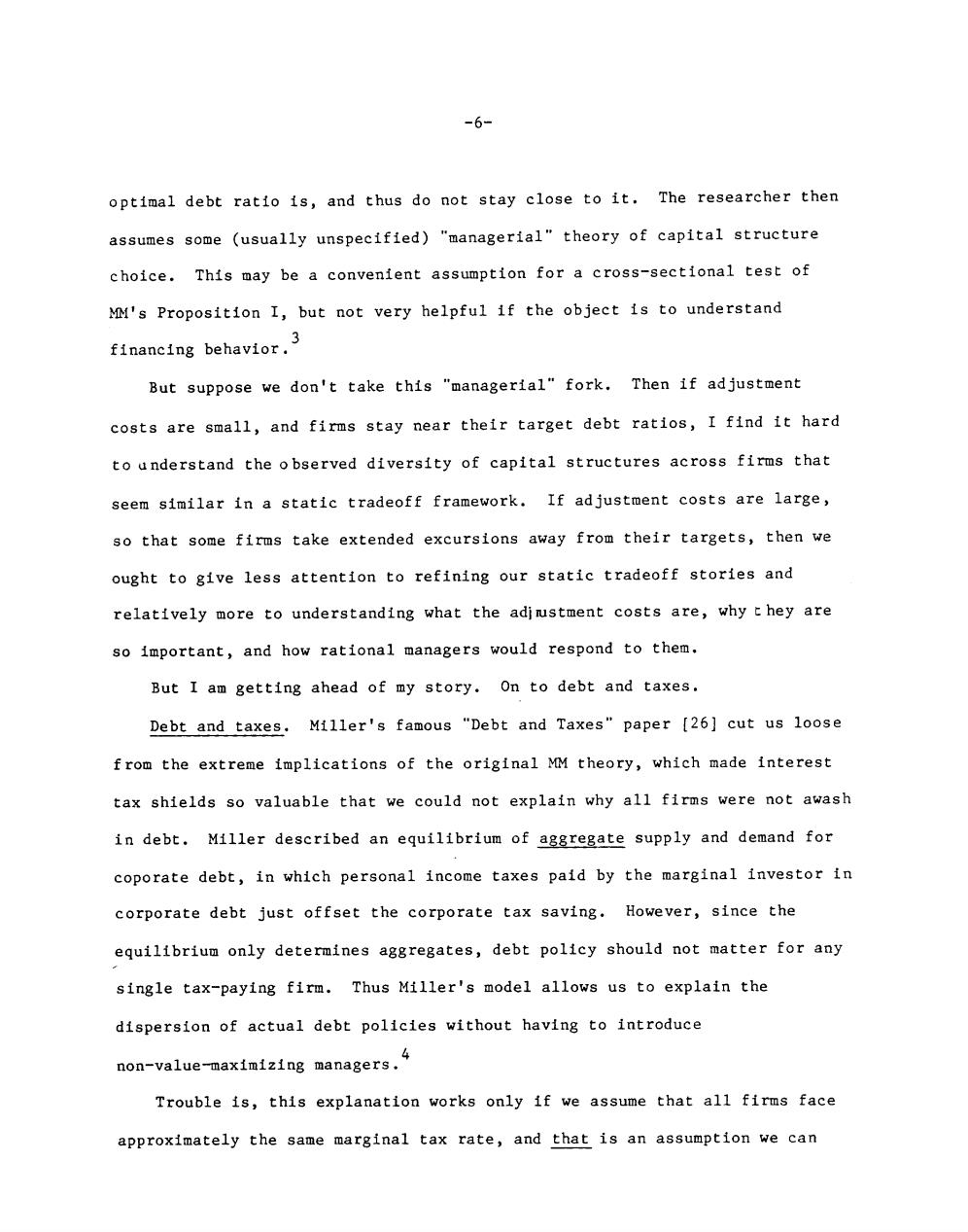正在加载图片...

-6- optimal debt ratio is,and thus do not stay close to it.The researcher then assumes some (usually unspecified)"managerial"theory of capital structure choice.This may be a convenient assumption for a cross-sectional test of MM's Proposition I,but not very helpful if the object is to understand financing behavior,3 But suppose we don't take this "managerial"fork.Then if adjustment costs are small,and firms stay near their target debt ratios,I find it hard to understand the o bserved diversity of capital structures across firms that seem similar in a static tradeoff framework.If adjustment costs are large, so that some firms take extended excursions away from their targets,then we ought to give less attention to refining our static tradeoff stories and relatively more to understanding what the adjuustment costs are,why t hey are so important,and how rational managers would respond to them. But I am getting ahead of my story.On to debt and taxes. Debt and taxes.Miller's famous "Debt and Taxes"paper [26]cut us loose from the extreme implications of the original MM theory,which made interest tax shields so valuable that we could not explain why all firms were not awash in debt.Miller described an equilibrium of aggregate supply and demand for coporate debt,in which personal income taxes paid by the marginal investor in corporate debt just offset the corporate tax saving.However,since the equilibrium only determines aggregates,debt policy should not matter for any single tax-paying firm.Thus Miller's model allows us to explain the dispersion of actual debt policies without having to introduce non-value-maximizing managers,4 Trouble is,this explanation works only if we assume that all firms face approximately the same marginal tax rate,and that is an assumption we can